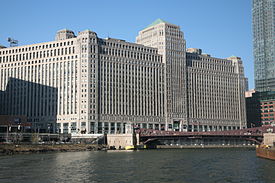 For a few beautiful days in late October, the W3C held its annual Technical Plenary and Advisory Committee meeting (TPAC) at the Cité Centre de Congrès de Lyon. As in years past, hundreds of information technology professionals attended TPAC to advance standards for the World Wide Web. As part of TPAC, the Web Commerce Interest Group (WCIG) met October 25 and 26. TPAC provides an opportunity for groups within the W3C to collocate and interact on topics face to face, and the WCIG meeting took full advantage of that opportunity. See the meeting agenda for links to all presentations.
For a few beautiful days in late October, the W3C held its annual Technical Plenary and Advisory Committee meeting (TPAC) at the Cité Centre de Congrès de Lyon. As in years past, hundreds of information technology professionals attended TPAC to advance standards for the World Wide Web. As part of TPAC, the Web Commerce Interest Group (WCIG) met October 25 and 26. TPAC provides an opportunity for groups within the W3C to collocate and interact on topics face to face, and the WCIG meeting took full advantage of that opportunity. See the meeting agenda for links to all presentations.
The WCIG is a forum within the W3C to discuss emerging trends in commerce, with special attention given to topics that would benefit from standardization. The primary stakeholders in Web commerce are all those who interact on the Web for the sale or purchase of goods and services, including consumers, merchants, and suppliers of systems and technologies that enable transactions. On the first day, the group discussed the ever changing regulatory environment, the expanding role of identifying artifacts (credentials) in commerce transaction flows, as well as the emerging role of new technologies in solving commerce use cases. On the second day, the group discussed issues surrounding adoption of W3C standards in the commerce space (including payments), as well as industry priorities for standards in the near term.
Regulations Regarding EU Payments
During the past few years, the regulatory environment in Europe has been dominated by Payment Services Directive (PSD2). This directive gives much more control of how user data is used to the users themselves. PSD2 adoption simultaneously promotes consumer benefiting competition as well as the need for stronger identity checks. David Balaschk (Deutsche Bundesbank) walked the group through the current European regulatory landscape, progress on PSD2 implementations, and progress on supporting instant payments in Europe.
Verifiable Credentials and the Web
The Verifiable Credentials Working Group (VCWG) joined the WCIG in discussion of topics associated closely with credentials and commerce on the web.
Dan Burnette, co-chair of the VCWG (ConsenSys) reviewed the progress on use cases and the data model for credentials. He described a test suite designed to help validate proof of concept efforts, and discussed the ongoing adoption of VCWG work in financial services and trade organizations.
Next in the session, Manu Sporny (Digital Bazaar) examined use of new standards from the Web Authentication Working Group that have impact on credentials. He offered a demo of the use of credentials in a custom-built Chromium browser. During the demo the group examined the issues of using a digital wallet to store credentials, and how private keys can be handled.
Kim Duffy (Learning Machine) and Joe Andrieu (Legendary Requirements), co-chairs of the Credentials Community Group, helped the group understand upcoming developments and potential standardizations in the credentials area. Linda Toth (Conexxus) presented the progress in implementing a Digital Offers Ecosystem and the potential standardization opportunities for the W3C in those efforts.
Hyperledger
Arnaud Le Hors (IBM) gave a talk on Hyperledger, a Linux Foundation project. Hyperledger is an open source, distributed ledger on blockchain. In the course of the discussion, Arnaud referenced different commerce related implementations using Hyperledger such as Everledger and Food Trust. The main uses for blockchains in commerce focus on areas where shared and consensually verified data is required. He highlighted the differences between implementations that require privacy vs. classic blockchain examples like BitCoin, and also discussed the many feature contributions to the Hyperledger framework.
Digital Contracts
Contracts, implicit and explicit, are at the core of all commerce. Allen Brown (Deixis) gave a detailed and forward thinking presentation on how contracts might be digitized on distributed ledgers. He discussed the mathematical basis of digital contracts, and how digital contracts can control and record the execution of actions addressed by the contracts. Keeping the contracts and the resulting threads of execution visible between parties – using blockchain ledgers – could make automating contracts easier. In contrast to some other efforts to share contracts using blockchains, the introduction of a mathematical basis for contracts makes it possible to certify (or “prove”) that important contract components actually do what they’re intended to do.
Merchant Adoption
The Payment Request API, authored by the W3C Web Payments Working Group, is now shipping in all major browsers and is increasingly supported in gateway libraries. Ian Jacobs (W3C) led the session where the group discussed outreach to merchants and service providers. The scalability that the Payment Request API can provide will be a substantial benefit to both consumers and implementers once it’s more widely adopted.
Gildas Le Louarn (Lyra Networks) began by presenting a thoughtful exploration of issues that merchants, consumers, and service providers have with the uptake of current W3C payment standards. By providing both “pros” and “cons” from the perspective of the stakeholders, he exposed numerous areas for continued discussion on topics including consistency of both the user and the implementer experience, as well as security concerns.
Continuing discussion, the group examined how existing on-line in-app mobile applications (e.g. loyalty) allow merchants or loyalty providers to tailor the payment experience to some extent.
Industry Priorities
In the wrap-up session, the WCIG discussed continuing issues with current implementations as well as additional topics to watch:
- Transaction abandonment continues to be a problem for Web commerce and mobile commerce in general.
- Merchants and service providers are involved at W3C, but more involvement from issuing banks is essential.
- Browser vendors will continue to work to improve the user experience aspects of Payment Request API.
- New technologies such as VR and AR (XR) provide new challenges for creating an integrated user experience.
- Support for “order ahead” as well as potential uses for blockchain technology in commerce are in discussion in merchant groups today.
- Merchants continue to deploy in-app applicationseven though consumers show signs of app fatigue.
The group finished the meeting with a reminder of the on-going monthly teleconferences for the WCIG (the next one is scheduled for January 28) and a call for topics for future meetings.




